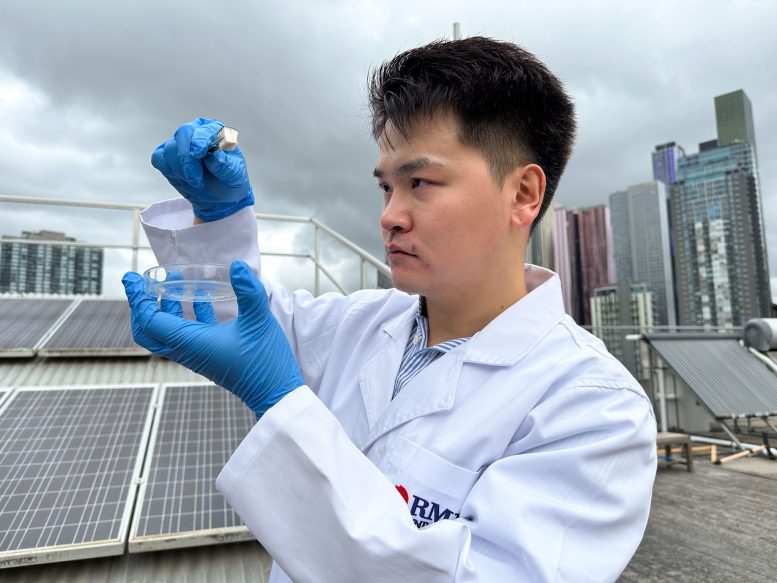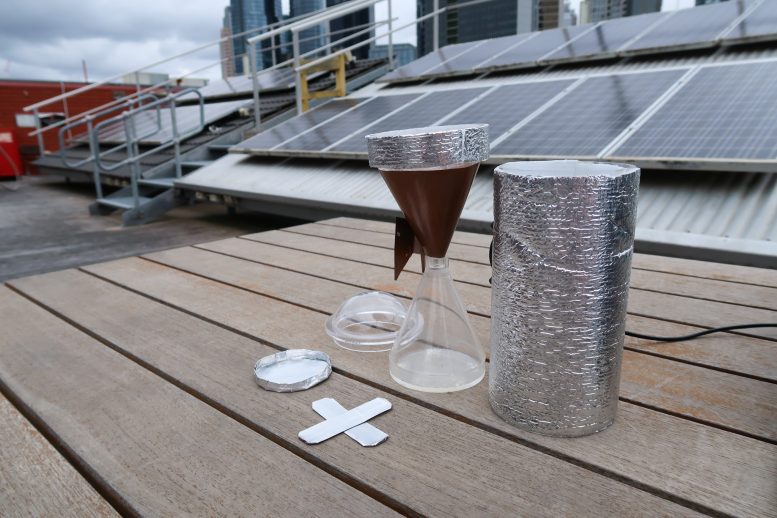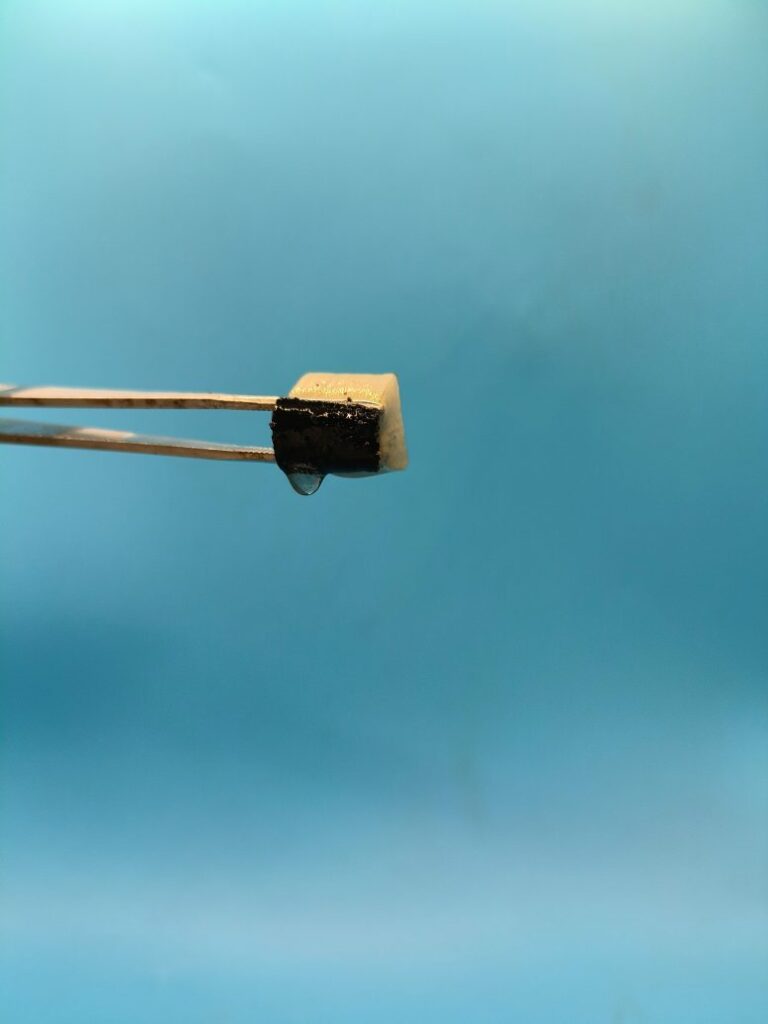Innovative Solar-Powered Sponge Harvests Water from Air — Even in Dry Climates
A team of engineers from Australia and China has developed a cutting-edge, sponge-like device that can extract water from the air and dispense it into a cup using energy from the sun. Unlike conventional approaches such as fog collection or radiative cooling, this new technology maintains high performance even in environments with low humidity.
This atmospheric water-harvesting system operates effectively across a wide humidity spectrum (30–90%) and temperature range (5–55°C), making it suitable for diverse climate conditions.
Dr. Derek Hao, a senior researcher at RMIT University in Melbourne, explained that the system utilizes modified balsa wood, which naturally has a porous structure. This wood is treated to absorb moisture from the air and release it when needed. The device fits inside a specially designed cup, which includes a dome-shaped lid, a tray to protect against pollutants, a cooling unit, and a solar-powered mechanism for activation.
“Clean water scarcity affects billions, and water-related diseases claim millions of lives each year,” said Dr. Hao, who is a materials scientist and environmental engineer at RMIT’s School of Science.
The project was conducted in partnership with five Chinese institutions and led by Dr. Junfeng Hou of Zhejiang A&F University. According to Dr. Hao, the system combines several advanced materials and components: balsa wood, lithium chloride, iron oxide nanoparticles, and a layer of carbon nanotubes, among others.
Artificial intelligence was used to optimize the performance of the device, helping predict how it would behave under varying environmental conditions.
Early Prototype Shows Strong Results
In lab tests, the prototype demonstrated promising performance. The material absorbed approximately 2 milliliters of water per gram under 90% humidity and released most of it within 10 hours when exposed to sunlight—outperforming many current alternatives in both efficiency and cost. With just nine sponge blocks weighing 0.8 grams each, the device was able to collect and dispense 15 milliliters of water into the cup.
Outdoor trials yielded equally encouraging results. “In real-world conditions, the sponge captured 2.5 milliliters per gram overnight and discharged nearly all of it during the day, reaching a daily efficiency of 94%,” said Dr. Hou. Even under 30% humidity, the device still absorbed 0.6 milliliters of water per gram.
Sustainable Design Inspired by Nature
The use of balsa wood not only makes the system affordable and sustainable but also enhances water movement through its natural porous network. “This makes it possible to produce the material on a large scale and deploy it in areas with limited water access,” said Dr. Hao.
The prototype held up well in extreme conditions—retaining its flexibility and functionality even after being stored at –20°C for 20 days. Its performance also remained stable over 10 consecutive absorption-release cycles, with only a minor decline in efficiency (less than 12%).
Scalability and Future Applications
With the current prototype measuring just 15 cubic millimeters, scaling up is straightforward, according to Hao. Larger versions or modular arrays could easily be created to meet various needs, particularly in disaster-stricken or remote regions.
“The device’s ability to produce safe drinking water from the air using only solar energy makes it especially useful in emergency scenarios where conventional water sources are unavailable,” Hao added.
Because the primary material—balsa wood—is inexpensive, biodegradable, and easy to work with, the technology is both scalable and environmentally friendly. Its durability and low maintenance requirements also suggest long-term cost-effectiveness.
The research team is now in talks with industry partners about pilot-scale production and real-world deployment. Future plans include integrating the system with solar panels and thermal storage for continuous operation, even when sunlight is intermittent.
Hao also noted the potential for smart control systems using IoT sensors to further optimize water harvesting based on local temperature, humidity, and solar radiation. The team envisions using AI-driven design platforms to explore new material combinations and enhance performance predictions over time.
Reference:
Zhang, X., Xu, Y., Han, S., Weng, X., Che, W., Gu, K., Guan, Y., Yu, Y., Hao, D., & Hou, J. (2025, February 28). Development and characterization of novel wood-based composite materials for solar-powered atmospheric water harvesting: A machine intelligence supported approach. Journal of Cleaner Production.


















